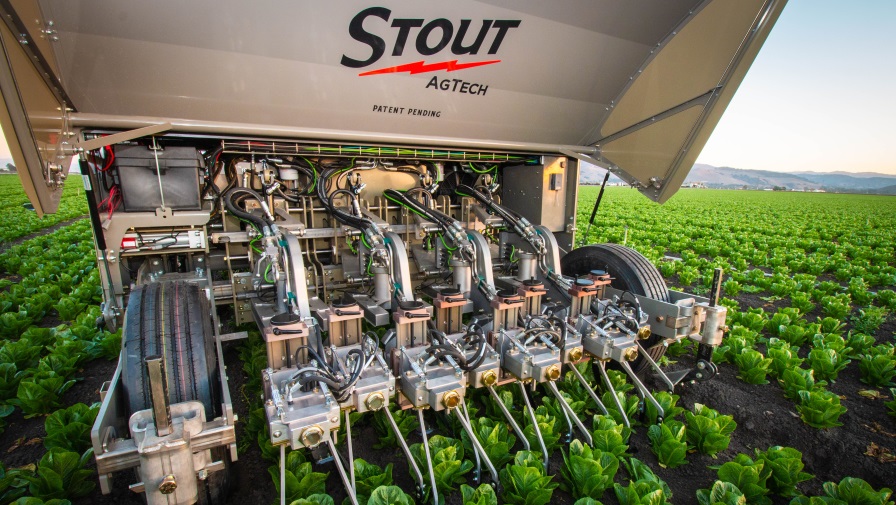Southeast Produce Growers Scan for Damages in the Wake of Hurricane Idalia
Even though it’s not quite the historic peak of Atlantic hurricane season, some folks have already had their fill of tropical activity for 2023. Hurricane Idalia slammed into Florida’s Big Bend area as a major storm last week, packing with it winds in excess of 130 mph, a dangerous storm surge, widespread rainfall, tornadoes, and more. Idalia raced through Northwest Florida, Southeast Georgia, and the coastal Carolinas, leaving behind plenty of destruction. In the wake of the storm, produce growers in the path are now assessing damages.
So far, there hasn’t been too much to report for Florida growers in that area, according to Christina Morton, Director of Communications for the Florida Fruit and Vegetable Association. But there are reasons why. “For a limited number of growers, there was significant damage, but that is a unique part of the state that is less densely populated,” she says. “The majority of specialty crop growers saw no impacts. The timing of our season (which runs November-early summer) and the storm’s path helped on that front.”
Morton says some progress is being made for growers who did feel Idalia’s punch. “For those who lost it, we are hearing that power has been/is in the process of being restored.”
Even though Idalia left a big mark, Morton notes it could have been much worse for the state’s agriculture interests. “Generally speaking, while a limited number of growers saw significant impacts in the Big Bend region, much of the state’s specialty crop growers were spared. For growers who were able, normal operations resumed Thursday.”
Fortunately for the state’s citrus sector, Idalia’s fast northwest track pardoned main production areas. Many citrus groves are still in recovery mode after Hurricane Ian’s onslaught last fall. Even long-lasting effects from Hurricane Irma in 2017 are still evident.
For growers who were impacted, they are encouraged to complete the post-storm survey being conducted by UF/IFAS assessing the impact of Hurricane Idalia on the agriculture sector.
FEMA has enacted major disaster declarations in 13 Florida counties, including: Citrus, Colombia, Dixie, Gilchrist, Hamilton, Hernando, Jefferson, Lafayette, Levy, Madison, Pasco, Suwannee, and Taylor.
Florida Commissioner of Agriculture Wilton Simpson sent a letter to U.S. Secretary of Agriculture Tom Vilsack highlighting damage suffered by Florida’s agriculture industry from Hurricane Idalia and asked for specific flexibilities in reporting deadlines and sign-up periods for standing federal disaster programs. Click here to read the letter.
Also in response to the natural disaster, the the Florida Farm Bureau Federation has created a relief fund to aid farm families in their recovery efforts. According to the organization, the Hurricane Idalia Relief Fund will provide support for the recovery from agriculture-related losses. All donations will be tax deductible. Donations can be made via check or through the relief fund web page.
“Our thoughts and prayers go out to all families impacted by Hurricane Idalia,” says Jeb Smith, President of the Florida Farm Bureau Federation. “We know this relief fund will provide support to farming families in need during this difficult time.”
What About Georgia?
Idalia’s fast forward motion hastened weaking of the storm as it moved further inland. The storm was still a strong hurricane as it trekked across parts of South Georgia.
According to the Georgia Department of Agriculture, initial observations from Idalia’s impacts on the state’s agriculture crops and farm operations included:
- Multiple reports of downed Pecan Trees throughout the impacted area (Pierce, Echols, Lowndes, Cook, Brooks, Wilcox, Irwin, Ben Hill, and Crisp counties – possibly more).
- Reports of pecan crop loss throughout the impacted area.
- Multiple reports of tobacco crop on the ground unable to be harvested and likely loss of tobacco crop left in the field.
- Some produce damage with produce plastic torn and ripped up in some areas.
- Field corn down and in some case not able to be harvested, likely resulting in loss of corn still left in fields.
- Sweet corn laid down in the field.
- Some cotton twisted but likely recoverable.
- Minimal pine tree/forestry damage observed or reported.
- Hay barns, sheds, and other agricultural facilities mangled or torn down.
- Reports of irrigation pivots twisted and/or turned over.

Map from the Georgia Department of Agriculture shows the wind path Idalia took through the state.
Similar to UF/IFAS, Georgia Department of Ag staff is continuing to survey and assess the damage caused by Hurricane Idalia and is beginning the recovery process.
“As a 7th generation farmer, I know firsthand the devastating impacts severe weather can have not only on our farmers and producers but on rural communities, local economies, and our state’s economy as a whole,” stated Georgia Agriculture Commissioner Tyler Harper.









